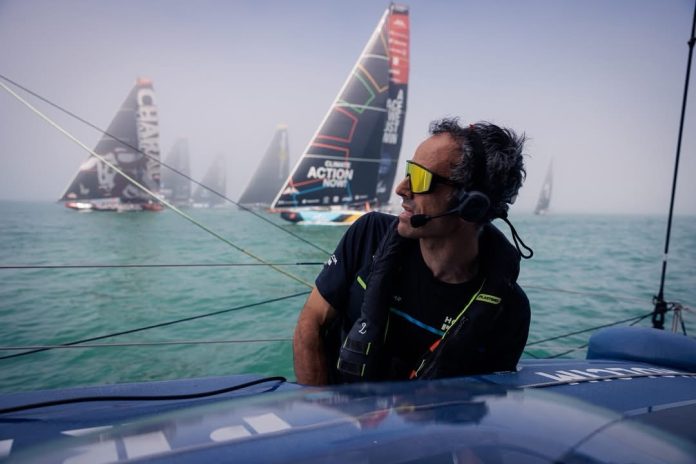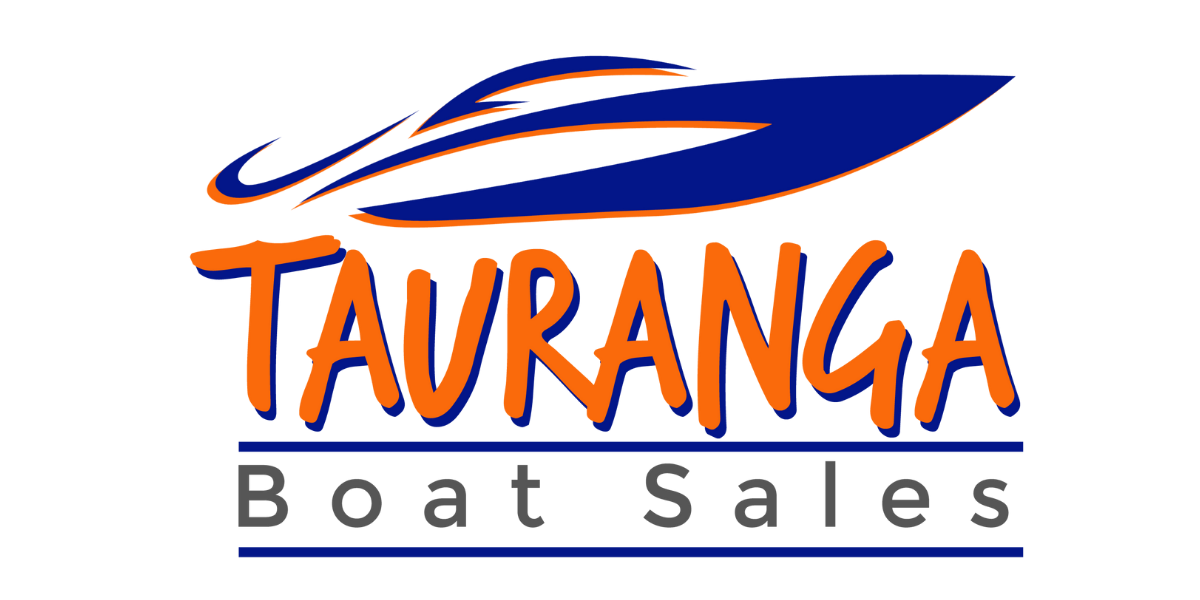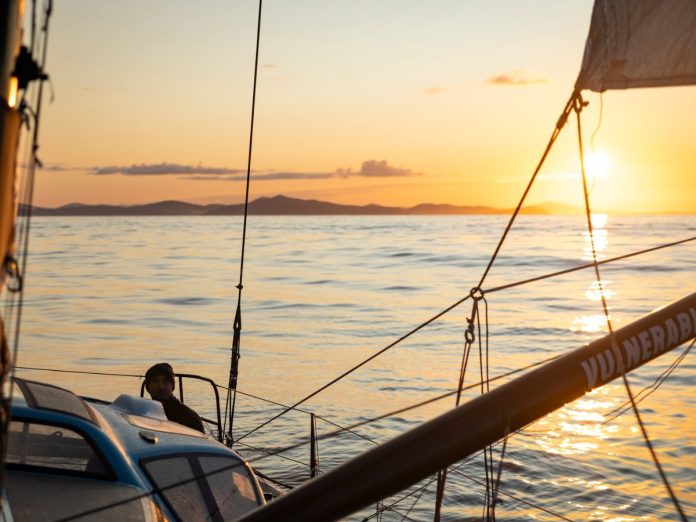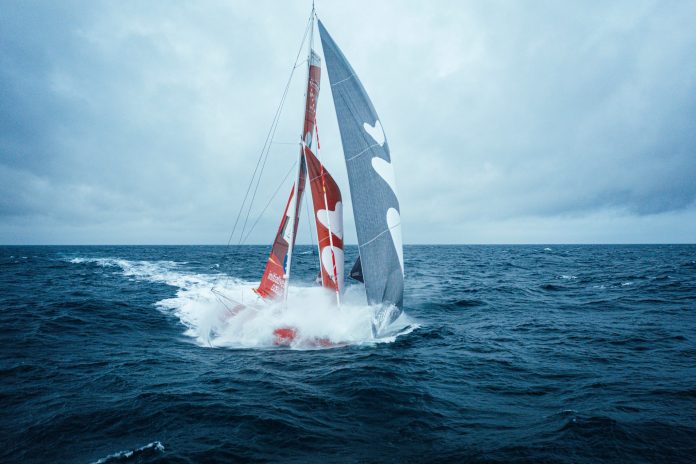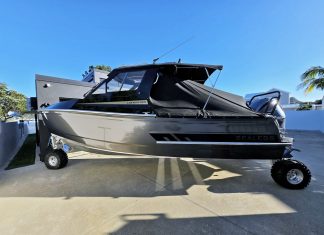The inaugural 2025 Course des Caps – Banque Populaire du Nord is officially underway. In front of a crowd that braved the Channel mist, eleven IMOCA 60s slipped across the start line just after 2 p.m. on Sunday, June 29, heading clockwise around the British Isles in what promises to be a race defined not by outright speed, but by strategic dexterity and unrelenting patience.
While the atmosphere ashore was festive, the fleet’s departure was anything but straightforward. With a light and unstable breeze of just 4–6 knots, compounded by strong opposing tidal currents, the early stages have already proven to be a strategic minefield. Sailors found themselves in what race director Jacques Caraës called a “delicate” situation — one that would likely shape the tone of the entire 2,000-nautical mile journey.
A ghostly, gripping departure
The start took place beneath a lingering veil of fog, adding a layer of surrealism to an already tense moment. Though the crowd couldn’t see far offshore, they certainly felt the energy. The boats crept forward, each skipper acutely aware that even a small mistake could result in precious hours lost to the current.
“It’s a game of chess from the very first mile,” said Thomas Ruyant (VULNERABLE). “It looks calm, but that calm hides how easily you can be caught out.”
Early leader Sam Goodchild (MACIF Santé Prévoyance) was first around the clearance buoy at 2:23 p.m., followed closely by Ruyant and Benjamin Dutreux (4CAD – La Mie Câline). The first five boats rounded within five minutes of one another. But the back of the fleet — including Jérémie Beyou’s Charal, nearly 25 minutes off the front — already has a hill to climb in a race where light winds may offer few opportunities to recover.
A fleet at the mercy of weather and tides
The strategic complexity of this race lies not just in the 2,000 miles of coastline to be negotiated, but in the wildly variable weather already playing havoc with routing predictions. Originally expected to last around five days, forecasts now suggest seven to eight days may be more realistic due to a persistent high-pressure system building across the region.
Race organisers have planned accordingly. There are built-in options to shorten the course — for instance, skipping the Shetland leg — depending on progress by the time the fleet reaches Fastnet Rock. In extreme cases, the race could even be judged off Dover to avoid a days-long drift through a dead calm toward the finish.
Caraës explained, “We don’t want this to become a test of endurance for the wrong reasons. If the forecast turns difficult, we can adapt.” For now, however, the full route remains in place.
Early tactical dilemmas and sail choices
The first 48 hours are expected to be especially challenging. Competitors are facing a classic English Channel trap: strong current, heavy maritime traffic, and barely enough wind to overcome either.
“There’s more current than wind,” said Damien Seguin (4CAD – La Mie Câline). “If we’re not smart, we’ll go backwards.”
Some sailors even mentioned dropping anchor — an extremely rare manoeuvre in an IMOCA — to avoid being flushed backward near Cherbourg, where currents were predicted to top eight knots overnight.
Much of the strategic tension lies in sail selection. Under race rules, each team declares just six sails for the entire course. With both light-air patches and potential downwind legs later in the race, finding the right balance is difficult.
“We’re sailing in conditions we haven’t seen in a long time,” said Sam Davies (Heart Initiatives). “We’ve had to think through things like anchorage, sail limitations, and provisioning — and all that before we even get to the actual challenges of the western Irish coast or the English Channel return.”
Davies added that her sail plan wasn’t finalised until shortly before the start. “You lock it in with what you know — but the long-term forecast is full of doubt.”
Fleet dynamics taking shape
By the time the fleet cleared the first mark, the race had already begun to stretch out. While conditions remain light and fickle, the early leaders will benefit from being able to pick their line away from the trailing wake of the fleet. The routing dilemma now centres on choosing between hugging the English coast or venturing across the Channel to the French side. Each offers tactical gains — or losses — depending on the next breeze.
Jérémie Beyou summed it up succinctly: “It’s not about pulling away right now. It’s about not getting caught.”
Justine Mettraux (TeamWork – Team Snef) warned that even small wind shifts could change the entire race: “One wrong move near a rock, or a failed gybe in the light, and you’ll be playing catch-up all the way to Fastnet.”
A promising, if sluggish, opening chapter
Despite the slow pace, the race has already delivered tension, complexity, and high-level offshore decision-making — all hallmarks of IMOCA racing. The Channel exit is expected to take more than two days, with some skippers predicting they won’t reach Scilly until Tuesday afternoon — a leg that could be done in a single day under normal conditions.
The start of the Course des Caps has confirmed what many suspected: this will not be a sprint, but a cerebral test of navigation, resilience, and precision, with fatigue and food reserves becoming increasingly important the longer the race draws on.
For a first edition, it’s been an auspicious — if fog-shrouded — beginning. The British Isles are waiting. And the fleet has just begun the long, winding journey to get around them.








